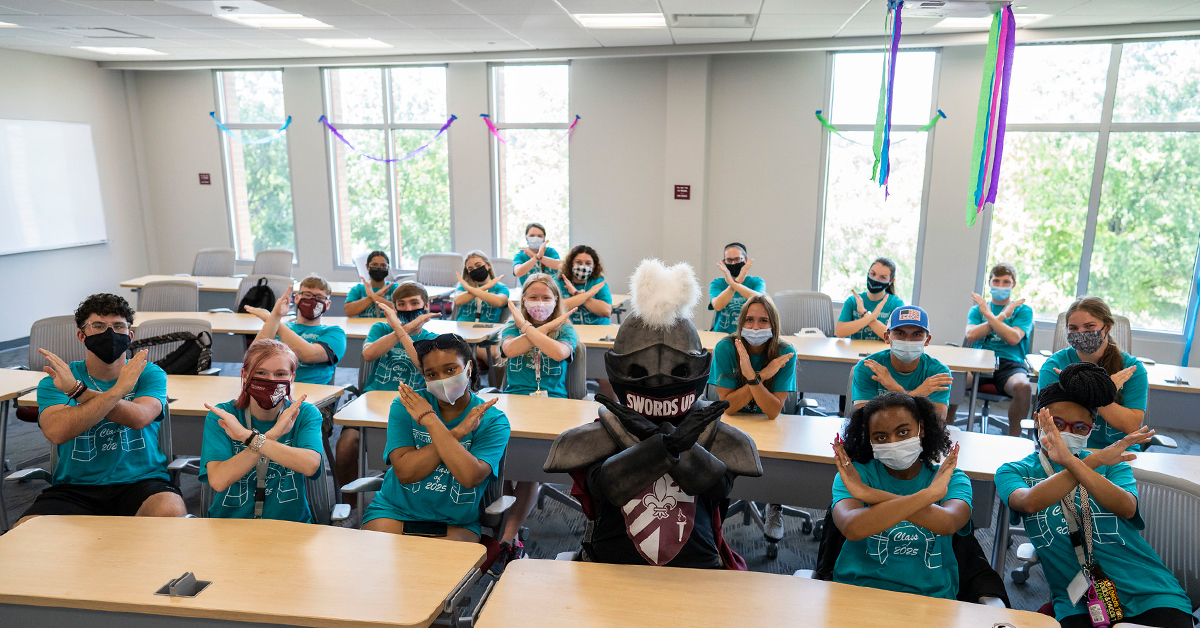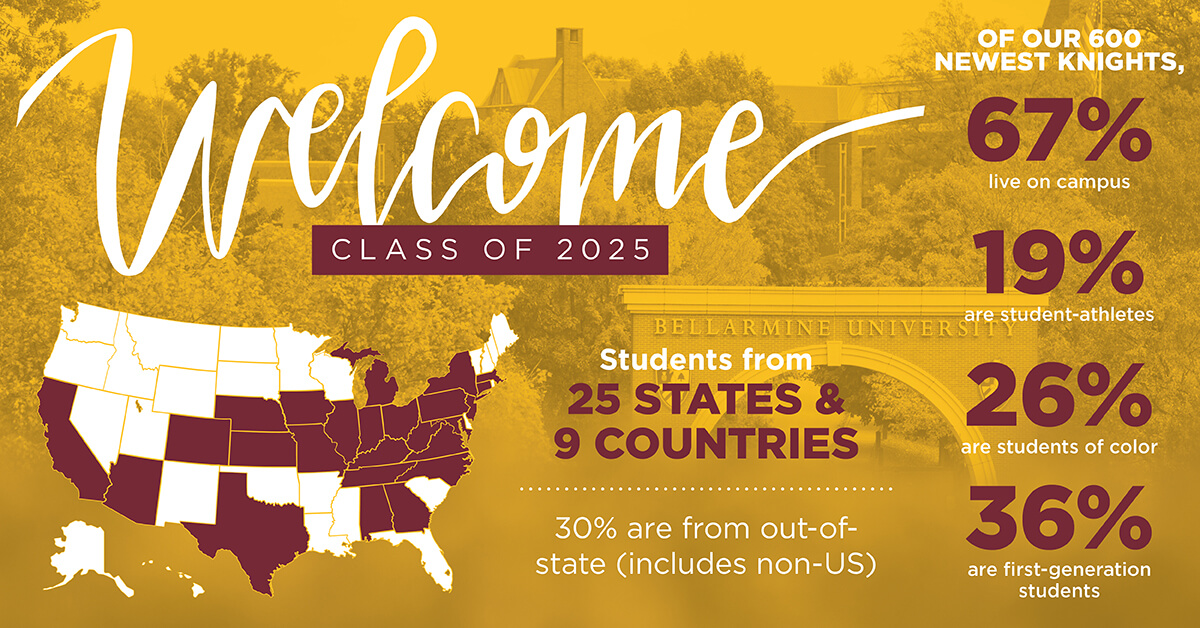
Despite concerns that the pandemic might widen college-going gaps for first-generation students and students of color, the incoming first-year class at Bellarmine University this fall exceeds the Fall 2019 numbers in both categories.
Not only that—the Class of 2025 is the most diverse in Bellarmine history. Of the 600 first-year students who began classes on Thursday, 26 percent are students of color, compared to 18 percent in Fall 2019 and 22 percent in Fall 2020.
Thirty-six percent of the students are first generation, meaning they will be the first in their families to earn a college degree. That compares to 35 percent in Fall 2019 and 33 percent in Fall 2020.
The Class of 2025 comes to Bellarmine from coast to coast—and beyond—with 25 states and nine countries represented. Thirty percent of the first-year students come from outside Kentucky.
The numbers represent progress under Bellarmine’s strategic plan, “Tradition and Transformation,” which calls for expanding the university’s recruiting footprint and increasing the diversity of students, faculty and staff. One
of the plan’s main goals, Bellarmine Athletics’ rise to NCAA Division I in 2020, helped to increase national awareness of the university.
“Our unwavering commitment to expanding and diversifying our enrollment and geographic reach as well as increasing access and affordability for students from all walks of life is unequivocal,” said Dr. Mike Marshall, Bellarmine’s vice
president for Enrollment, Marketing and Communication. “Key initiatives such as test-optional and Public Price Promise are consistent with our student-centered approach and resonate with potential Knights and their families.”
Beginning with the Class of 2025, Bellarmine University now allows prospective undergraduate students to complete their application without submitting their standardized test scores if they feel their performance on the ACT or SAT doesn’t accurately
reflect their academic talent. Regardless of test-optional status, admission counselors continue to consider a variety of factors in evaluating candidates, including high school grades, counselor recommendations, curriculum, student employment, leadership
experiences, and activities and involvement.
Fifty-nine percent of the incoming class qualified for the Public Price Promise, and 39 percent of those, or 236 students, are enrolled in the program, according to Lauren Keeling, assistant vice president of Enrollment Management and interim dean of
Undergraduate Admission.
The program matches the current direct cost of a qualifying student’s flagship university—often their state’s largest, oldest institution, providing a private liberal arts learning experience for the same price as a state school. Eligible
students are enrolling as a traditional first-year student; have an unweighted high school GPA of 3.6; and must live on campus all four years.
The number of first-year students living on campus has also rebounded to pre-COVID numbers: 67 percent are staying in the residence halls.
“Alumni, friends and the city of Louisville have every reason to be proud of Bellarmine’s trajectory and impact,” Marshall said. “We look forward to continuing to demonstrate the value of a Bellarmine education to the community
at large.”
